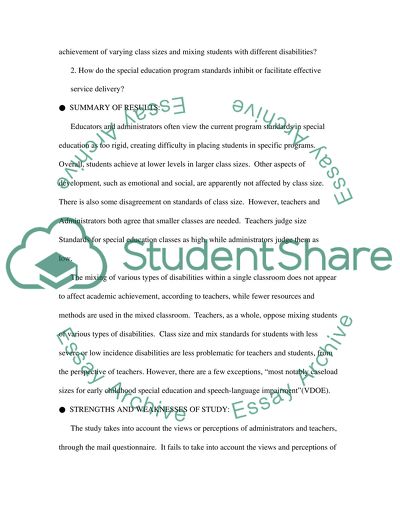SPECIAL EDUCATION Essay Example | Topics and Well Written Essays - 500 words - 2. Retrieved from https://studentshare.org/miscellaneous/1548028-special-education
SPECIAL EDUCATION Essay Example | Topics and Well Written Essays - 500 Words - 2. https://studentshare.org/miscellaneous/1548028-special-education.


